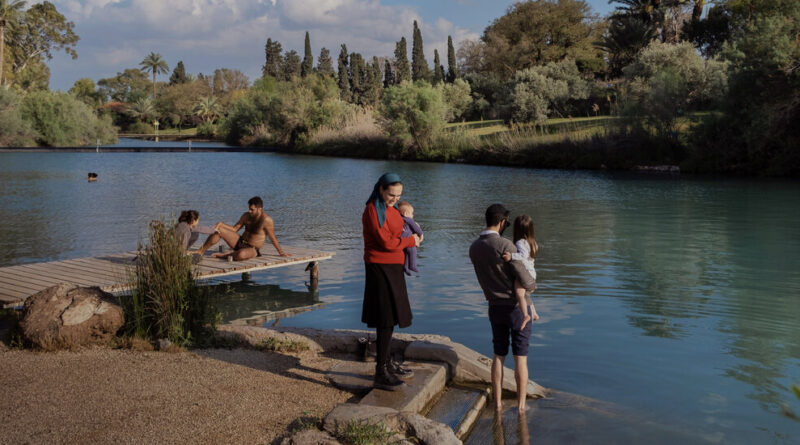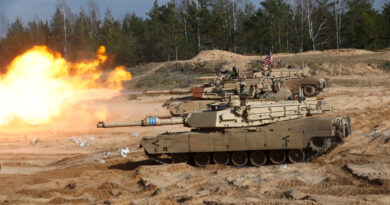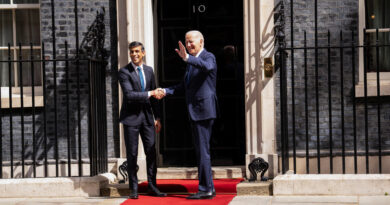The 2 Israels: Court Crisis Is Front Line for Dueling Visions of a Nation’s Future
[ad_1]
Pasit Siach, a high school teacher, says she dreams of an Israel in which everyone — ultra-Orthodox Jews, atheists and anyone in between — feels able to lead a lifestyle of their choice.
Pinchas Badush, an ultra-Orthodox rabbi, has a different vision, one in which public life shuts down on the Jewish sabbath, civil marriages are not recognized by the state and ultraconservative rabbis enforce a strict interpretation of kosher food regulations.
Those competing visions of what Israel is and should be are part of a defining battle that has divided the country for years, and it has intensified since Prime Minister Benjamin Netanyahu took office in late December at the helm of the most right-wing and religiously conservative administration in Israeli history.
While those tensions have long played out across Israel, they are particularly pronounced in the Valley of Springs, a picturesque plain in northeastern Israel bedecked with rivers, streams and Roman ruins where Ms. Siach and Mr. Badush live.
Here, in the lush farmland squeezed between the River Jordan and the mountains that mark the edge of the Israeli-occupied West Bank, supporters of the government and its detractors live in uncomfortable proximity, and their disagreements have occasionally erupted into physical confrontations.
One side is mainly drawn from the roughly 20,000 residents of Beit Shean, a hardscrabble city populated mainly by Mizrahim, or Jews of Middle Eastern origin, like Mr. Badush, who largely back the government. The other side is mainly formed from the roughly 10,000 residents of the affluent villages, or kibbutzim, that surround the city — most of them Ashkenazim, or Jews of European descent, like Ms. Siach.
For years, the residents of the kibbutzim have controlled access to the most desirable land and scenic riverbanks in the area, a lingering source of tension between the two groups. And the Mizrahim of Beit Shean have often worked as laborers in farms and factories owned by the kibbutzniks, exacerbating a sense of class division.
That all boiled over recently as groups from both communities faced off against each other over a contentious plan laid out by the government that would allow it to assert greater control over the Supreme Court — a body that both sides of the debate feel is key to determining Israel’s future.
Beit Shean is a sleepy low-rise community where most restaurants close on the Jewish Sabbath. Many of the Mizrahim there see the Supreme Court as an unelected elite — dominated by Ashkenazi judges — that unfairly subverts the public’s elected representatives. Others see it as an obstacle to the primacy of Orthodox Jewish practice in public life. Some see it as both.
Opposition to the plan has largely come from the kibbutzim, gated communities that were founded as collective farms but often now look more like leafy suburbs. The kibbutzniks often see the court as a guarantor of the secularism and religious pluralism that they felt was envisaged by Israel’s declaration of independence in 1948, and as a bulwark against government overreach.
In recent weeks, those divisions have led to open confrontations on the roads around Beit Shean. In March, dozens of government supporters, some of them from Beit Shean, took over a major intersection near the city and blocked drivers they suspected were anti-government kibbutzniks, but they allowed Beit Shean residents and government supporters to pass.
Yair Ben Hamo, a Mizrahi resident of Beit Shean who helped lead the roadblock, said he was motivated by issues “way more complex than just the reform.”
“It’s about who gets to run the country,” said Mr. Ben Hamo, 37. Though the social gaps between the two ethnic groups began to narrow decades ago, Mizrahim like Mr. Ben Hamo still have a sense of grievance toward the Ashkenazim, who dominated the country in the early years of the state and still often live, like the kibbutzniks near Beit Shean, on the country’s best land.
“They’ve always given us the feeling that we’re second-class citizens,” Mr. Ben Hamo said.
The tensions in the area also have a religious dimension, fueled by a long-running national dispute about what kind of Jewish state Israel should be.
Because of Israel’s electoral system, which generally forces larger parties to form alliances with smaller ones, ultra-Orthodox Jewish politicians have long played kingmaker in Israeli coalition governments. That has increased ultra-Orthodox influence over governance — influence that the Supreme Court has sometimes counteracted.
The court has tried — unsuccessfully, so far — to block a decades-old mechanism that allows ultra-Orthodox Jews to study the Torah instead of completing military service like most other Israeli Jews.
Mr. Badush, the ultra-Orthodox rabbi from Beit Shean, said he was worried that if the judicial overhaul did not go ahead, the Supreme Court would finally succeed in scrapping that exemption, forcing his three teenage sons to fight instead of study.
“The state of Israel has to recognize the value of Torah study,” said Mr. Badush, 46, who is also a city councilman. “Our rights to this land are based on Judaism, on the Bible, on Jewish tradition.”
“Otherwise,” he added, “what are we doing here?”
Without judicial oversight, Mr. Badush also hopes the government might have a freer hand to keep ultra-Orthodox rabbis in charge of the process by which people can convert to Judaism, the inspection of kosher restaurants and the authorization of Jewish marriage.
“If not,” Mr. Badush said, “in another 20 years, there won’t be a Jewish state.”
But Ms. Siach, the teacher, fears that if the government undermines the judiciary, there will be no check on the government’s power and no protection against religious coercion.
One of the parties that Mr. Badush represents, Shas, briefly sought this year to criminalize non-Orthodox prayer and immodest clothing at the Western Wall, the holiest site in Jerusalem, before retracting the proposal after heavy criticism, including from government colleagues.
Ms. Siach’s 12-year-old son plans to celebrate his bar mitzvah at the Western Wall in the fall. Without the court, she wonders, will the government still allow men and women to gather together at a section of the wall where mixed-gender prayer has long caused tension.
Ms. Siach, 43, also fears for gay rights given the hostility that some members of Mr. Netanyahu’s government have expressed toward the L.G.B.T.Q. community. She wonders whether the state will still recognize her cousin, a lesbian, as the parent of her nonbiological daughter.
“We’re in a country that is fighting for its life,” Ms. Siach said. “They want to impose religious practice on the whole population.”
If the Valley of Springs illustrates Israel’s divisions, it also highlights how those dividing lines are often blurred.
Though most kibbutzim were established as secular communities, several of those near Beit Shean were instead founded for Jews who follow an Orthodox Jewish lifestyle. A significant proportion of their residents are also now Mizrahim.
At the roadblock, some of the Mizrahi protesters, like Mr. Ben Hamo, were secular Jews who are not driven by religious concerns. By contrast, some of the drivers pulled aside by the protesters were either Mizrahim or religious — or both.
“That’s what’s very painful,” said Osnat Cohen-Neuman, 45, an Ashkenazi married to a Mizrahi who was stopped on her way home to a religious kibbutz.
“They look at me and say, ‘She’s this or that,’” Ms. Cohen-Neuman said. “They don’t see that I’m from a religious home.”
Ms. Siach is also a devout Jew. She observes the Jewish Sabbath, teaches Jewish philosophy and lives on a religious kibbutz that houses a Jewish seminary.
Her disagreement with Mr. Badush is about what a Jewish state should look like.
Mr. Badush fears that if the dominance of Orthodox Judaism is allowed to ebb, it would undermine the foundations of the state.
“The minute you start breaking that down,” he said, “it’ll be a country like any other country. And if it’s a country like any other country, what gives us the right to be here?”
But for Ms. Siach, it is pluralism that is essential to the state’s survival: Minority rights and religious tolerance are what renders Israel’s national identity as a Jewish state compatible with Israel’s political identity as a democracy.
A monolithic approach to worship is “terrible in my eyes, and not Jewish,” Ms. Siach said.
“The religion I grew up with, and the Bible I know, is full of references about treating non-Jews well,” she added.
Myra Noveck contributed reporting from Beit Shean, and Gabby Sobelman from Rehovot, Israel.
[ad_2]
Source link


